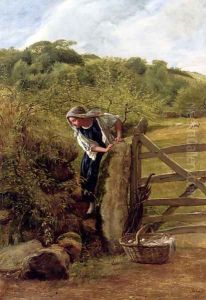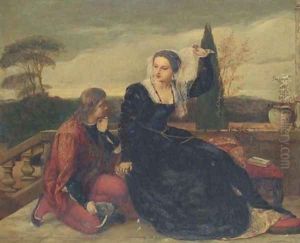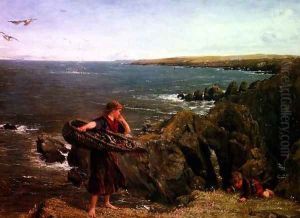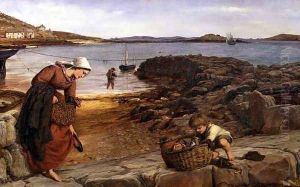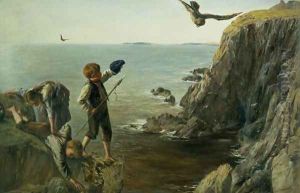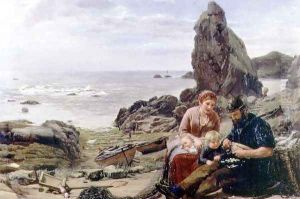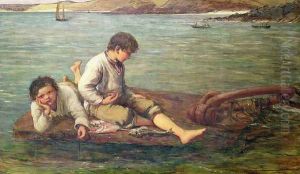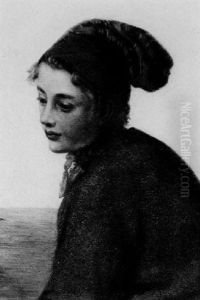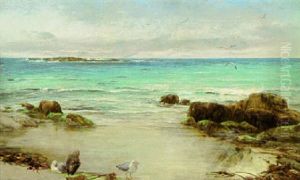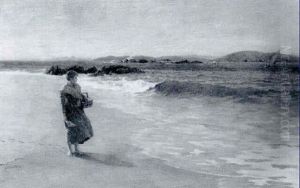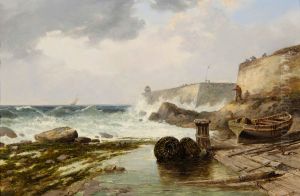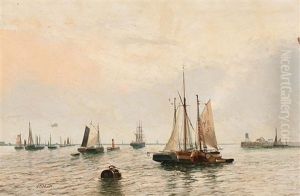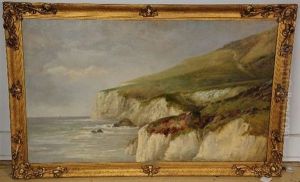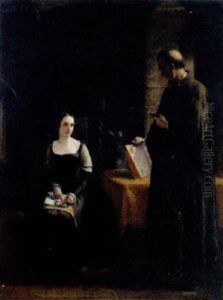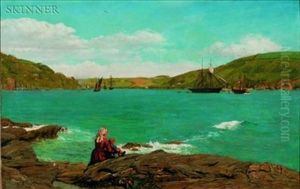James Clarke Hook Paintings
James Clarke Hook was a prominent British painter and member of the Royal Academy. Born in London on November 21, 1819, Hook demonstrated an affinity for art at a young age. His father, James Hook, was a composer, which contributed to an environment that fostered his creative talents. Hook attended the Royal Academy Schools, where he was awarded a silver medal in 1836 and a gold medal in 1837 for a historical painting.
Hook's early work was characterized by his historical and literary subjects, but he eventually became more renowned for his depictions of the British coast and the lives of fishermen, which he painted with great sympathy and detail. His style was influenced by the Dutch genre painting tradition, and he was praised for his ability to capture the atmosphere and light of the scenes he portrayed.
Throughout his career, Hook exhibited frequently at the Royal Academy and was elected as an Associate of the Royal Academy (A.R.A.) in 1850 and a Royal Academician (R.A.) in 1860. His painting 'The Departure of the Pilgrim Fathers' was particularly noted for its historical significance and was exhibited at the Royal Academy in 1856.
Hook's works were widely appreciated during his lifetime and he received numerous commissions. He continued to paint and exhibit until his late eighties. James Clarke Hook passed away on April 14, 1907. Today, his paintings can be found in many prestigious collections, including the Tate Britain and the Victoria and Albert Museum. His legacy is that of a dedicated artist who captured the spirit of the Victorian age and the lives of common people with sensitivity and lifelike detail.
